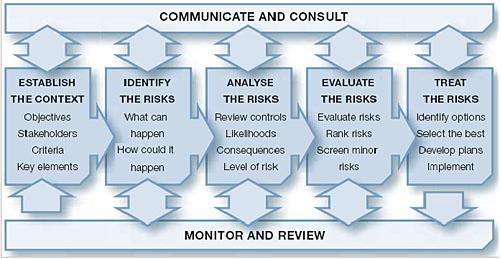Overview Handout
Purpose: The purpose of a SIPOC Diagram is to define and document the key elements of an activity. This includes Customers/Requirements, Outputs, Process Steps/Requirements, Inputs and Suppliers.
Materials: SIPOC overview handout, whiteboard, worksheets, flipcharts, PowerPoint (not preferred as it can take away from engagement and participation), Posters, PostIts™ (or my favourite, coloured sticky arrows – which are then placed on a large, blank, laminated SIPOC chart)
Time: Varies. Plan for at least two hours based on the complexity of the process, the knowledge of the participants of the process, and their previous experience creating SIPOCs.
Step ONE: Get everyone on the same “purpose” page
Note 1 to facilitator: Do this step even if working with a knowledgeable group by reviewing the elements critical to conducting a successful SIPOC session.
Use this review as a means of setting a positive tone and developing a “conversational” style of facilitating the session.
The five critical elements to a good SIPOC are:
1. Provide participants a brief overview of the SIPOC structure and how it important to manage its use in terms of range of purposes.
Apply the Covey principle “begin with the end in mind”– SIPOCs are flexible tools and can be focused on achieving a range of purposes – such as project planning, or vulnerability mapping or organisational restructuring. So be mindful – ask how will you USE this SIPOC?
2. The challenge for service industries (as distinct from making widgets) is to think beyond the process column (where many SIPOCs start). The challenge for individuals is to think outside of their square.
3. When recording on the SIPOC use only as much detail as needed to understand/communicate effectively.
4. Record the agreed purpose of this SIPOC session – make the agreed purpose the label of the “car park”. The “car park” is an area of white space, such as butcher’s paper or a whiteboard on wheels, which is structured to capture – as they relate to the SIPOC element being mapped at the time - (1) assumptions (2) constraints (3) risks and (4) decision criteria
5. This is not an academic exercise - define how things really get done, not how we might want them to be.
Step TWO: Establish the Framework
Note 2 to facilitator: Groups sometimes prefer to be more “organic” than systematic. Be flexible and accommodate as long as the entire SIPOC form is completed with enough detail to understand the process. Be flexible and use plain language. Write it down, and then ask open-ended, clarifying questions to get it right. Place the “thing” or “issue” on the SIPOC at a place of best agreed fit. Challenge the status quo, test the understanding of the process, and encourage dialogue.
Note 3 to facilitator: A challenge from here on out in this process is to keep the group at a high level of detail - not allow them to get too granular. The detail can come later in the process flow diagram mapping or you can go back and break each key process step into sub-steps and SIPOC them. (It depends on the purpose of the SIPOC and the complexity of the process.)
Use the SIPOC framework (on the wall chart, computer, whiteboard, worksheet, or flipchart).
1. Seek permission and agreement from the group to start “backwards from the right” - from the Customer column.
- Identify customers (some will be stakeholders with specified needs to be met which are contractual, or legally obligatory - others stakeholders may have a more indirect and general interest, needing only to be appropriately informed).
- “Back into” the customer requirements column by now clearly stating the requirement(s) of each stakeholder.
(This two set customer column should be reviewed whenever something changes – so that the ripple effects can be mapped and managed.)
2. List the outputs from the process which will deliver the requirements of the customer – and collectively, achieve the required outcome of the activity.
3. Structure a process which will deliver the outputs effectively and efficiently.
- Clearly identify the START of your process (cue, prompt, trigger that requires you to act).
- Clearly identify the END of your process (how do you know you are done?).
- List the 3-5 (NO MORE THAN 7) key steps in the process being mapped.
- Incorporate feedback loops – how will you, your customer, your supplier communicate?
(Record: Process name; Process owner; Process performance measures/metrics – structured to inform improvement opportunities; any known operational definitions of key process elements; any known assumptions/constraints and immediately apparent risks - record in “car park)
Note 4 to facilitator: Remind the group that the assumptions and operational definitions are ongoing lists and may be added to as needed during the session. The idea is to make sure everyone is working on the same sheet of paper and means the same thing when using a term and those assumptions are made visible, discussed, and validated or challenged as appropriate.
4. List the inputs into each step of the process
- List the requirements of each input (your view – the person doing the work)
- List the supplier of each input of the process
5. List or highlight the Critical-to-Quality (CTQ) elements for the process
Step THREE: Check your work
• Review the completed SIPOC.
• Verify all key components are completed/addressed.
• Determine Next Steps/Action Plan.
• Make sure all assumptions are visible, discussed, validated, and documented.
• Document operational definitions of terms, symbols, acronyms, equipment, standards, etc.
• Do not forget to identify your information/communication loops and feedback mechanisms.
• Document source specifications, standard operating procedures, and/or references for your process.
• Review where you need to have Service Level Agreements (SLAs) – between you and supplier, you and customer.











